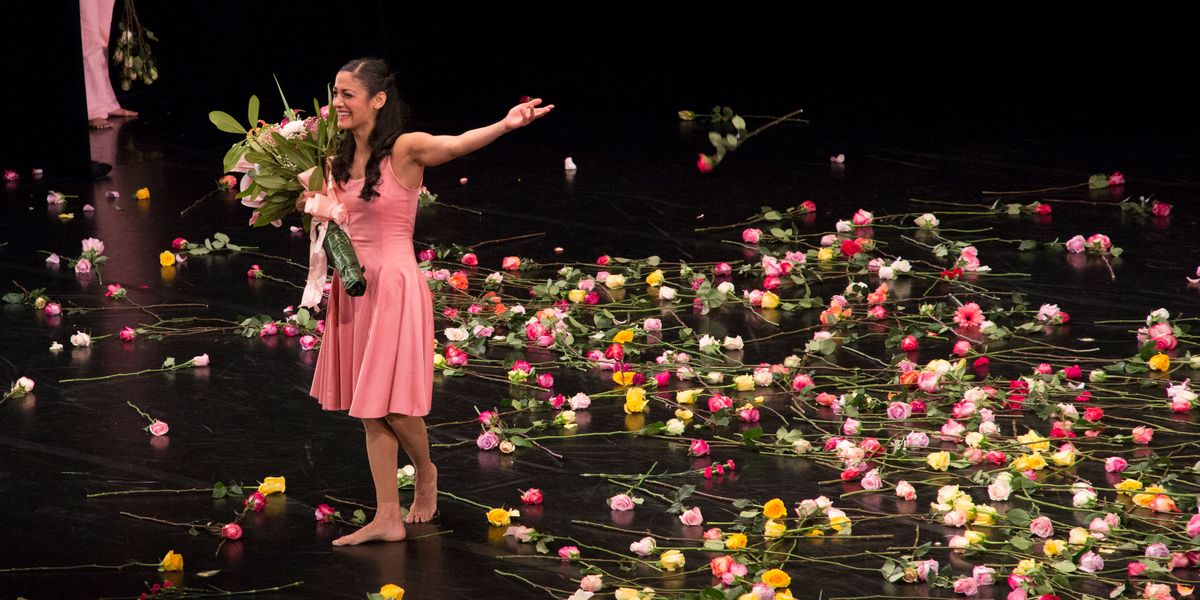Why It's Important to Come Back From Injury on Your Own Terms
It felt like fabric ripping in my shoulder. In spring of 2019, while on tour with the Paul Taylor Dance Company in Florida, I slipped on some sweat during a solo in Esplanade and landed shoulder first. I couldn’t lift my arm for the rest of the last section, a series of catapults across the stage and sprints into baseball slides. Though I finished the dance, I left the tour early and returned to New York City without my colleagues. I wondered, How serious was it? Would I still have a job? The uncertainty was devastating. I felt broken and alone and was in debilitating pain.
The struggle led me to give notice to the company after 16 years. I didn’t want to dance in pain anymore.
I’ve had many injuries through the years, and each one has taught me something different. Throughout my career, my motto has been “Grow or die.” I associated pain with weakness; I danced to physical breaking points. That’s how I showed my devotion. That’s how I proved myself to the artists and the art I served. I know now, however, that pressure breeds injury—and is toxic for recovery.
During my various periods of rehabilitation—even as soon as a month after a serious surgery—I’ve had artistic staff and other dancers ask me when I would return. The moment I was back in rehearsal, they’d forget that I was still mending and ask, “Why are you marking?” Even worse, I’ve heard another dancer whispering, “I don’t think the choreographer would want it that way.”
Studies show that stress can slow down the healing process. While modern medicine is amazing and can give you a predicted timeline, it cannot know how your body will heal or if there might be setbacks.
After every injury, I asked myself, “Will I be able to dance again?” With some, I asked, “Will I walk again?” I came back from each one, but only due to superb doctors, a combination of Western and Eastern medicines, and huge amounts of determination.
Performing artists, like athletes, are rarely forthcoming about physical or mental problems. They won’t admit they are in pain, even to themselves, until an injury or illness makes a decision for them. Professional dancers fear missing out on parts, being replaced or, worse, losing their jobs. You’ll hear them say, “I injured myself doing x, y or z.” But in reality, injuries happen to us. There is power in language. Dancers should be encouraged to think and talk differently about the injuries they endure. Dance injuries are not self-inflicted.
Damage to the body exposes the cracks in a performer’s armor; they are defeating, dejecting, discouraging, and the disappointment is beyond belief. But when you’ve been knocked down, try to see your situation as it is and no worse. Then work on getting better.
Be aware of the internal and external pressures you’re facing. The psychological torment of perfectionism’s self-critical thoughts, paired with outside demands and physical trauma, can be ruinous. Mitigate people’s expectations; have deadlines and goals, but also know that they’re fluid. Accept everything as it comes, and trust you will eventually be okay. This will make for a far healthier recovery. When a fellow dancer is out injured, be mindful of how you can support them.
Knowing that you are valued by your artistic staff can help buoy your spirits as you heal. In 2013, when I was lying in bed with my leg elevated after an emergency surgery, Paul Taylor called me. He said, “You’re a mainstay. I want you back at 200 percent!” Other choreographers have forgotten to make that call. But Paul knew how to create hope.
Last November, six of us Taylor veterans—also my best friends—gave a series of epic retirement performances at Lincoln Center. For my final performance, I revisited the masterful Esplanade, the piece I’d slipped in. The day before, I still wasn’t sure if I’d dance the final section, and my alternate was ready to step in at the drop of a hat. I repeatedly practiced the baseball slides and falls, doing them slightly differently than my usual kamikaze way—this time more intelligently, but only I knew there was a difference.
Once I made my decision that I could do it, the fear melted like ice in hot water. In the silence just before the last section, I darted out of the fourth wing. I jumped. Then, in midair, I caught the conductor’s breath before the first note and heard an audible gasp from the house. With one big exhale, I slid across the stage, picking up where I had left off six months earlier.
That night was the biggest achievement of my life to date. I broke my own boundaries, doing what I wanted to do when I was ready to do it. Getting back—on my own terms.




